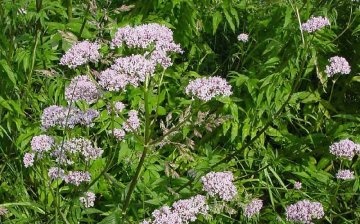Valerian officinalis - do we all know about her?
Valerian officinalis is known to everyone, but few people know what it looks like and what grows wild, and not just cultivated. There are other, less well-known names:
- febrile root;
- cat root;
- yarrow pink;
- earthy incense;
- aroma;
- sore;
- meow;
- cat grass.
What does Valerian officinalis look like?
Valerian is a powerful perennial that can reach heights of up to 1 meter. The stem is ribbed, with pinnate leaves on it.
Flowers can be different in color, but the properties of the plant are the same.
Useful properties and uses of valerian
Valerian medicinal was used by such ancient doctors as Hippocrates, Pliny and Dioscorides, in most cases for the treatment of ... female diseases.
In folk medicine, valerian is most often used to calm the nervous system, it very well helps and relieves the suffering of women with menopause, as well as to relieve stomach pains caused by nervous tension or stressful situations.
Previously, there was a claim that only one smell of valerian root is enough to relieve nervous tension, but many years of research have refuted this. In fact, only in the complex can all the active substances of this plant give the desired result, moreover, in high concentrations. Probably, many might have noticed that for a positive effect, it is necessary to take at least 30 drops of the tincture.
If valerian tincture is taken for a long time, it can affect the functioning of the gastrointestinal tract.



